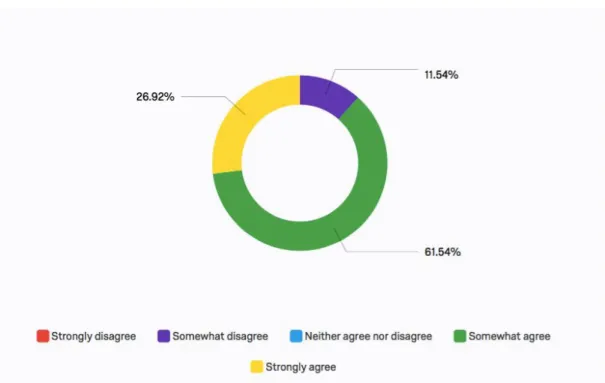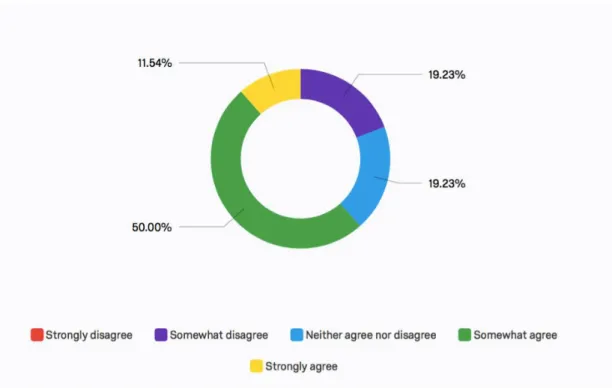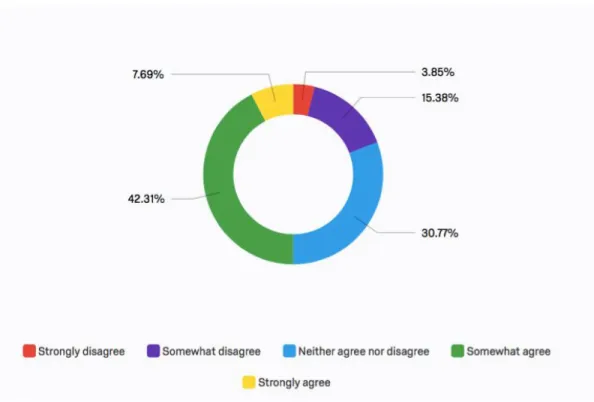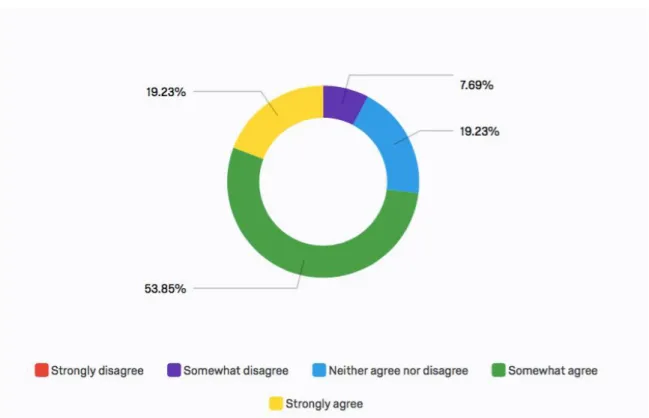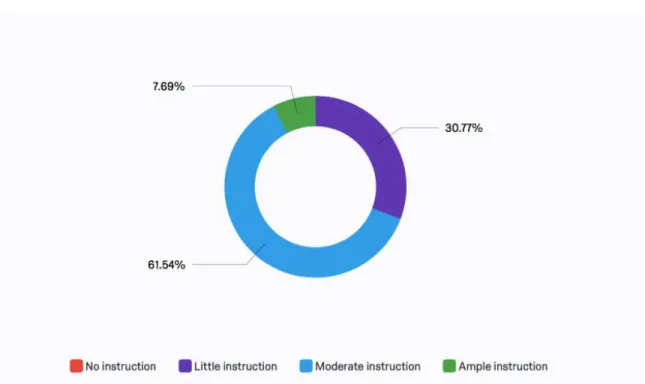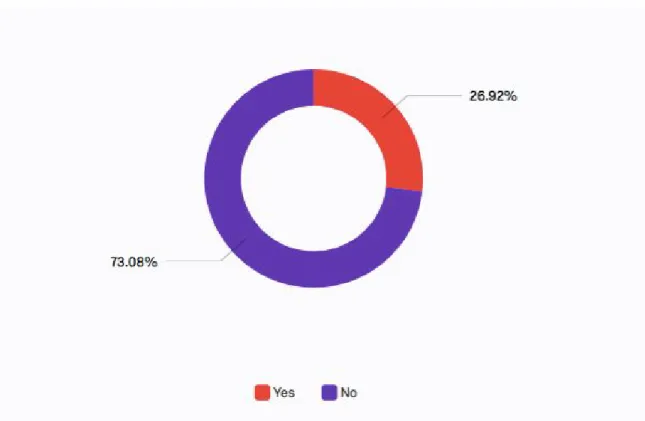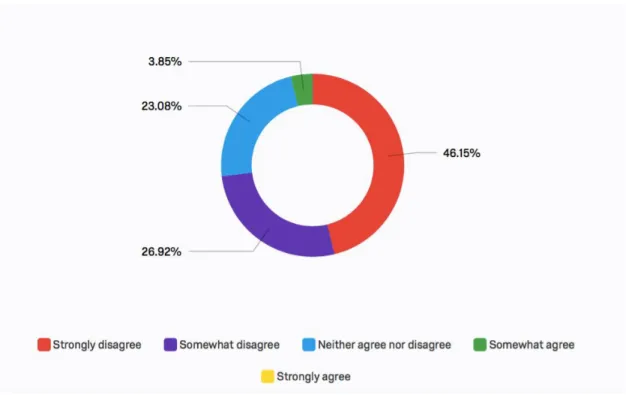In this thesis, I will discuss the perception of elementary school teachers about the use of art integration as a teaching practice in their classes and how. In addition, I conducted individual interviews with three tenured teachers at the rural Mississippi elementary school where I was placed. I conducted this mixed-methods study by adding a third source of data through an online questionnaire completed by in-service teachers at the same Mississippi elementary school.
Based on the findings, I have highlighted ways teachers can learn to engage in the use of arts integration in their classrooms. I found that while teachers may perceive limitations that hold them back from using the arts, they do see a high level of value in using arts integration to improve students' cognitive, social, and emotional skills.
The Problem
Successful arts integration teachers recognize that arts processes provide them with techniques that can help them reach the most students in a deeper way (Oreck, 2006). This will allow me to track my students' growth as they experience arts integration, as well as allow me to track how well I am able to integrate arts in an efficient and impactful way. Through reflecting on my experiences and observing how arts integration affects the students in my.
This thesis will examine the following question: How do teachers' perceptions of arts integration in the classroom affect student performance. The following section will review current research and opinions about the arts integration approach and its implementation in the classroom.
Literature Review
LaJevic (2013) also notes that arts integration is challenged by time and space constraints, lack of materials, lack of knowledge of the arts and low comfort levels in teaching them. Perhaps one of the biggest reasons why teachers avoid arts integration is due to their own perceptions of the arts. LaJevic (2013) mentions that the reason why many teachers feel they have insufficient knowledge of arts integration is due to the lack of arts in their own education.
When teachers are able to see the arts as an equal part of the curricular content and not just an ornamental decoration, the integration of the arts can reach its full potential in the classroom. One of the benefits that all students can reap through arts integration is improved cognitive skills and, in turn, academic performance. By holding students “responsible for important learning in both the art form and the other subject,” true arts integration is accomplished in the classroom (Silverstein & Layne, 2010, p. 7).
The potential of arts integration to promote student development and success in the classroom can also be maximized when teachers use the arts to differentiate learning for their students.
Research Methodology
I kept ongoing field notes in which I reflected on the arts integration experiences I observed, facilitated, and directed during my time as a student teaching kindergarten. I kept these notes from October 1st to February 13th, in which I discussed my personal experiences with arts integration. In addition to the in-service teachers, I myself was a participant in my own reflective journaling process about my experiences with arts integration.
Second, this is a public school district, so understanding these teachers' opinions about their experiences with arts integration will benefit other public school teachers and myself as I become an educator next year. To track how my own thoughts and feelings about how arts integration developed and changed throughout my student teaching experience, I reflected on each experience I had observing, assisting, or teaching an integrated arts lesson. Through my reflections, I addressed each of them with the following questions: In what way was art included in the lessons?; How did the teachers respond to the lessons?; How did the students respond to the lesson?; How the experience affected my perception of art integration.
I reflected on both positive and negative experiences to get the fullest possible picture of my vision for arts integration as a future teacher. These questions required teachers to reflect and discuss their involvement in arts integration and their views on its impact on arts integration. The questionnaire consisted of 15 questions that discussed teachers' experiences with integrating the arts, opportunities for professional development related to the arts, the amount of training in teaching the arts they received during their teacher education programs, and their views on how arts integration influences its impact. students.
To address that role and position myself within the research, I have included a piece below in which I describe myself as a person as well as the experiences that fueled my passion for studying the topic of arts integration in the classroom . One particular experience at the museum that particularly drove my passion for arts integration was my time working full-time for the summer at the museum as an AmeriCorps VISTA Summer Associate. That experience, along with all the different art programs I was involved with through my museum internship, inspired me to look even deeper into art integration in the elementary classroom and fueled my desire to make it the focus of my study by speak how teachers see it.
The Findings
This belief was not only held by the teachers who participated in the one-on-one interviews, but also supported by the vast majority of teachers interviewed by the. Part of the reason why this belief is so strong may be related to the component of student engagement that focuses on students receiving satisfaction and enjoyment from the interactions they have in the classroom. I found that the students were generally much more engaged and interested in lessons when there was some aspect of art involved, whether it was a true integration of art in which the art had equal weight in the lesson or it was simply an art was activity undertaken on a lesson.
Compared to worksheets that students often had to do, they seemed much more excited and engaged in class, even though it was in the afternoon (which is often a more difficult time for them) (October 22, 2018). This idea came about through several of my journal entries where I found that being physically active made students more engaged in the lesson because they enjoyed the art and movement so much. Jones emphasized that she can always "see that they are excited" and that "they really love it" because art helps students "keep an interest" in the material (Mrs. Jones).
I found this idea expressed in my own field notes through phrases like “their faces seemed to light up” (February the students were so happy to participate in the project.” November If the students get satisfaction and joy from creating art. Smith made was that "it's better if they can have art in every lesson" because the students are "more engaged" in the lesson and the material. But there is a disconnect that shows up because the teachers seemed to have a strong belief in the benefits and the effects of arts integration on their students, yet a smaller percentage of teachers seemed to feel confident in their abilities to actually put it into practice.
From the previous idea comes the idea that art gives students control over what they do in the classroom. While this is a strong statement in support of arts integration, it once again leads to the slight disconnect between the perspectives teachers seem to have and their actions in the classroom. One in three teachers who do not feel they have received much instruction in the arts is a large enough number to question the amount of instruction in the arts.
The vast majority of teachers (73%) had not attended any workshops or other professional development programs related to the arts, so only 1 in 4 teachers had experienced some kind of professional training on the use of the arts in the classroom. The realization that most teachers do not perceive the arts as a stimulus for disruptive or problematic behavior further emphasizes the benefits that arts integration can have in the classroom, as well as the importance of teachers overcoming their perceived limitations so that they and their students can reap the benefits of arts integration .
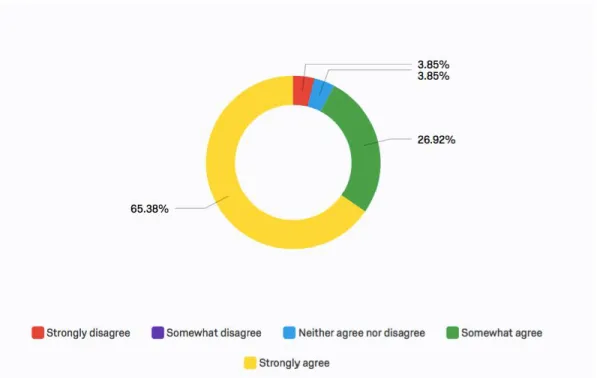
Final Conclusions
Based on the teacher perceptions I found, this study suggests several key ideas about the most effective ways for teachers to integrate the arts, particularly ways teachers can combat any common hesitations about integrating the arts and focus on the positive aspects of it. , which they see. as valuable to their students. The slow incorporation of art can allow teachers to slowly begin incorporating it into their lessons and. Because the teachers I worked with ranged in experience from 1 to 22 years, newer and older teachers were also able to work together to share ideas about arts integration and the best ways to use it.
Although each teacher may have slightly different ideas about the time and energy it takes to integrate art, it is imperative that teachers do not ignore the powerful benefits of art integration because it requires a little extra effort in planning and preparation. Whether the limitations teachers feel are related to time or to other concepts, learning to take the steps to overcome those limitations and fears is crucial to learning to be an effective user of arts integration. Arts integration is much more than just making crafts in the classroom from time to time.
Understanding teachers' perceptions in relation to arts integration practices reveals teachers' personal thoughts and ideas that highlight both the positive aspects of the arts and areas that need improvement and further research. This shared belief must be nurtured so that teachers' perceptions of arts integration can continue to develop and students can reap the benefits of its role in their learning. Champions of Change: The Impact of the Arts on Learning. Enhancing early childhood development through arts integration in economically disadvantaged learning.
Art teachers' perceptions and attitudes toward arts integration while participating in a state-wide arts integration initiative. Preparing teachers and administrators for effective arts integration. Retrieved from the United States Education Commission. Have you seen a difference in student engagement when using arts integration versus no integration?
